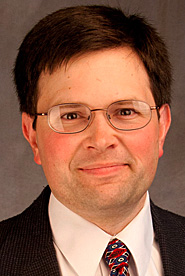The political ramifications of the adoption of the Common Core education standards will be examined in a Lawrence University economics colloquium.

Arnold Shober, associate professor of government at Lawrence, presents “You Wanna See Utah Become a Blue State? How the Common Core Raised Standards and Broke a Thirty-Year Truce between Republicans and Democrats” Thursday, April 28 at 4:30 p.m in Thomas Steitz Hall of Science 102.
When the Common Core State Standards were adopted in 2010 by 46 states, supporters thought they had gotten it right. After the spectacular flame-out of national standards 15 years earlier, Common Core boosters were determined to foil political opposition by applying lessons gleaned from earlier battles. The new standards touched only reading and math, were drafted by a large and diverse panel of experts and were state-led.
While supporters got what they wanted, in the process they wound up upending a long-standing, but uneasy, political peace.
Shober, a specialist on policy change and accountability in American education, is the author of the 2016 book “In Common No More: The Politics of the Common Core State Standards.” The book explores the shifting political alliances related to the Common Core State Standards Initiative, explains why initial national support has faded and considers the major debates running through the Common Core controversy.
About Lawrence University
Founded in 1847, Lawrence University uniquely integrates a college of liberal arts and sciences with a nationally recognized conservatory of music, both devoted exclusively to undergraduate education. It was selected for inclusion in the book “Colleges That Change Lives: 40 Schools That Will Change the Way You Think About College” and Fiske’s Guide to Colleges 2016. Engaged learning, the development of multiple interests and community outreach are central to the Lawrence experience. Lawrence draws its 1,500 students from nearly every state and more than 50 countries.